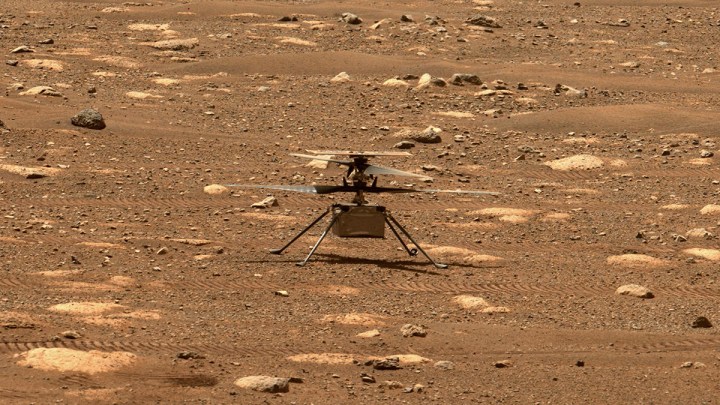NASA’s tiny helicopter Ingenuity arrived on the red planet along with the Perseverance rover in February, and after a small issue and some tweaks, it’s now ready for its first test flight. The helicopter test flight is set for tomorrow, Monday, April 19, and will be the first time that an aircraft has flown on another planet.
The little helicopter is set to make history, and NASA will be sharing the excitement with a livestream of mission control as the first data comes in. We’ve got the details on how to watch below.
What to expect from the test flight

Ingenuity had been set to perform its first test flight earlier this month, but engineers noticed an issue during a high-speed spin test. The helicopter team was quick to assure the public that the helicopter was healthy and well, but they needed to make some adjustments to the helicopter’s software to fix the issue. With those adjustments made, the team is now ready to go ahead with the test flight.
“The original flight date of April 11 shifted as engineers worked on preflight checks and a solution to a command sequence issue,” NASA wrote in an update on the helicopter. “The rover will provide support during flight operations, taking images, collecting environmental data, and hosting the base station that enables the helicopter to communicate with mission controllers on Earth.”
For this test, the helicopter will take off, hover in the air (using its sensors to autonomously adjust its position relative to the ground), and then land back on the surface again. If all goes well, over the coming months the helicopter will perform an increasingly complex series of flights to test out its full capabilities.
How to watch the livestream
NASA will be showing a livestream of mission control as the data from the first flight comes in, at the Space Flight Operations Facility at NASA’s Jet Propulsion Laboratory (JPL).
You can watch the livestream either using the video embedded at the top of this page, or by going to the NASA TV website.
The livestream will begin at 6:15 a.m. ET (3:15 a.m. PT) on Monday, April 19.
If the flight goes ahead as planned, this will be followed by a briefing at 2 p.m. ET (11 a.m. PT) in which members of the Ingenuity team plus representatives from NASA and from the Perseverance team will discuss the test flight and give more information about the helicopter.
Editors' Recommendations
- Final communications sent to the beloved Ingenuity Mars helicopter
- Starliner spacecraft just took a major step toward first crewed flight
- NASA reveals target date for first crewed Starliner flight
- NASA and Boeing start fueling Starliner spacecraft for first crewed flight
- SpaceX’s Starship reaches orbit on third test flight




